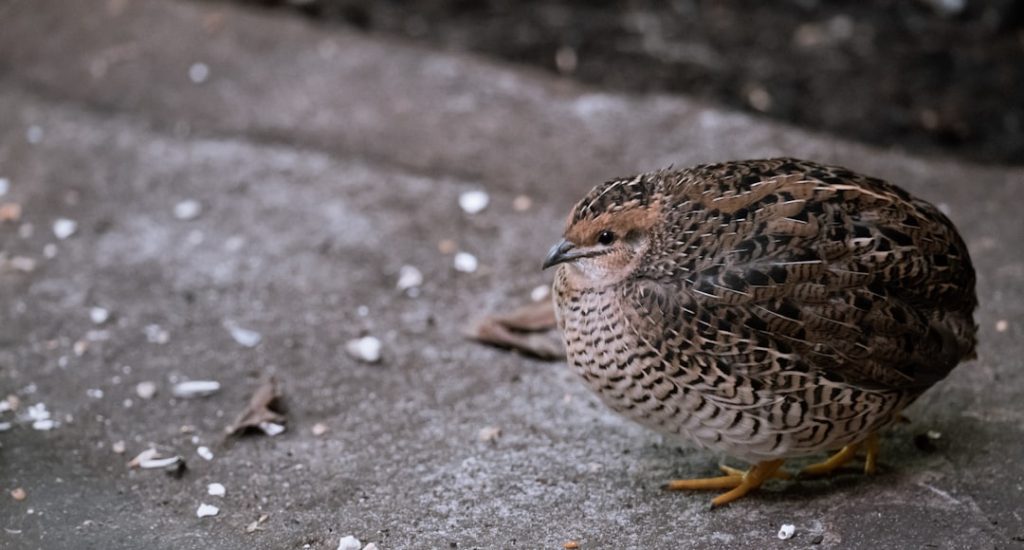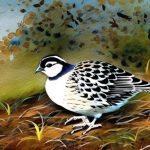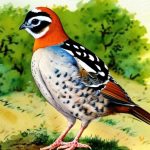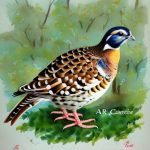Domesticated quail are small game birds that have been bred and raised in captivity for their meat and eggs. They are popular among farmers and hobbyists due to their small size, low maintenance, and high productivity. Quail are known for their fast growth rate, early maturity, and high egg production, making them a valuable addition to any poultry farm or backyard setup.
Quail come in a variety of breeds, each with its own unique characteristics and traits. These breeds have been selectively bred over the years to enhance specific qualities such as egg production, meat quality, or coloration. Whether you are interested in raising quail for their eggs, meat, or simply as pets, there is a breed that will suit your needs. In this article, we will explore some of the most popular domesticated quail breeds, their characteristics, housing and care requirements, breeding and rearing techniques, as well as health and nutrition considerations.
Table of Contents
Key Takeaways
- Domesticated quail breeds are popular for their small size, low maintenance, and high egg production.
- Popular domesticated quail breeds include Coturnix quail, Bobwhite quail, and Button quail.
- Different quail breeds have varying characteristics and traits, such as size, color, and egg production.
- Housing and care for domesticated quail require a secure enclosure, proper bedding, and a balanced diet.
- Breeding and rearing domesticated quail involves providing the right conditions for egg laying and incubation, as well as proper chick care.
Popular Domesticated Quail Breeds
1. Coturnix Quail: Also known as Japanese quail, Coturnix quail are the most popular breed for domestication. They are prized for their high egg production, with some hens laying up to 300 eggs per year. Coturnix quail come in a variety of color mutations, including standard brown, white, tuxedo, and silver. They are also raised for their meat, which is lean and flavorful. Coturnix quail are relatively easy to care for and can adapt well to different climates and environments.
2. Bobwhite Quail: Bobwhite quail are native to North America and are known for their distinctive whistling call. They are popular among hunters for their game bird qualities and are also raised for meat and egg production. Bobwhite quail are hardy birds that can thrive in a variety of habitats, making them a good choice for those looking to raise quail in outdoor aviaries or game bird farms.
Characteristics and Traits of Different Quail Breeds
Coturnix quail are known for their prolific egg-laying abilities, with hens reaching maturity at around 6-8 weeks of age. They are relatively small in size, with mature birds weighing between 4-6 ounces. Coturnix quail come in a variety of color mutations, including standard brown, white, tuxedo, and silver. They are docile birds that can be easily handled and are known for their gentle nature.
Bobwhite quail are slightly larger than Coturnix quail, with mature birds weighing between 5-7 ounces. They are known for their distinctive whistling call, which is a common sound in the woodlands and grasslands of North America. Bobwhite quail reach maturity at around 16 weeks of age and are known for their game bird qualities, making them popular among hunters.
Housing and Care for Domesticated Quail
When it comes to housing domesticated quail, there are a few key considerations to keep in mind. Quail are ground-dwelling birds that require ample space to move around and forage. A good rule of thumb is to provide at least 1 square foot of space per bird in the coop or aviary. The enclosure should be well-ventilated and protected from predators such as rats, snakes, and birds of prey.
Quail also require a substrate that allows them to dust bathe, such as sand or fine gravel. This helps to keep their feathers clean and free from parasites. Additionally, providing hiding spots such as small shrubs or wooden shelters can help reduce stress and aggression among the birds.
Breeding and Rearing Domesticated Quail
Breeding domesticated quail is relatively straightforward, as these birds reach sexual maturity at a young age. To encourage breeding behavior, it is important to provide a balanced diet that includes high-quality protein sources such as game bird feed or crumbles. Additionally, providing a photoperiod of 14-16 hours of light per day can help stimulate egg production.
When it comes to rearing quail chicks, it is important to provide a warm and draft-free brooder environment. Chicks should be kept at a temperature of around 95 degrees Fahrenheit for the first week of life, with the temperature gradually decreasing by 5 degrees each week until they are fully feathered.
Health and Nutrition for Domesticated Quail
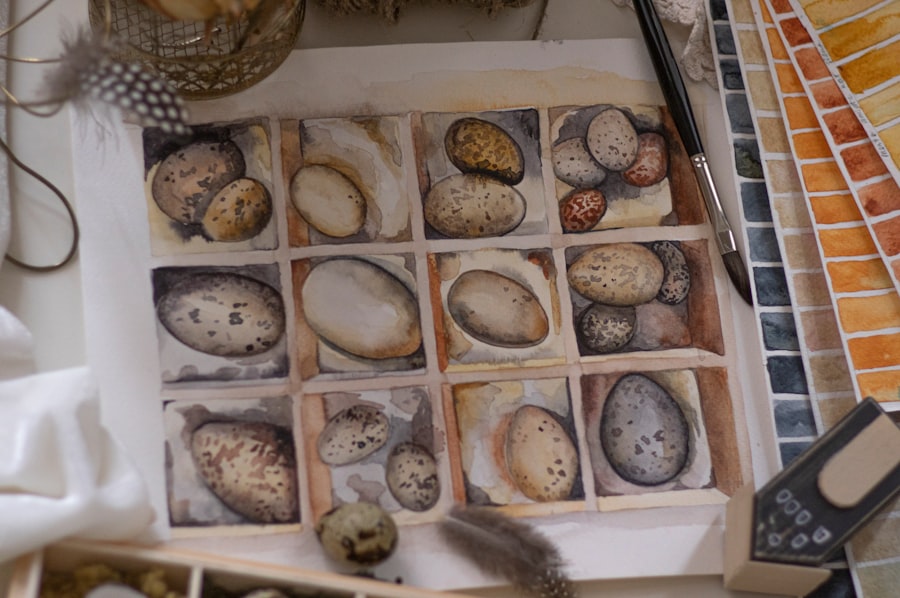
Maintaining the health of domesticated quail is essential for ensuring their productivity and well-being. Providing a balanced diet that includes high-quality game bird feed or crumbles is crucial for meeting their nutritional needs. Quail also require access to clean water at all times, as dehydration can quickly lead to health issues.
Regular health checks should be conducted to monitor for signs of illness or injury. Common health issues in quail include respiratory infections, parasites, and injuries from pecking or fighting. It is important to quarantine any sick or injured birds to prevent the spread of disease within the flock.
Quail as Pets: Considerations and Benefits
While quail are primarily raised for their eggs and meat, they can also make delightful pets for those with limited space or zoning restrictions. Quail are relatively quiet birds that do not require as much space as chickens or ducks, making them a good choice for urban or suburban environments.
Quail can be kept in small coops or aviaries and are relatively low maintenance compared to other poultry species. They are also known for their gentle nature and can be easily tamed with regular handling. Additionally, quail eggs are considered a delicacy in many cuisines and can be a valuable addition to any home kitchen.
In conclusion, domesticated quail breeds offer a range of benefits for farmers, hobbyists, and pet owners alike. Whether you are interested in raising quail for their eggs, meat, or simply as pets, there is a breed that will suit your needs. By providing proper housing, care, nutrition, and health management, you can ensure the well-being and productivity of your domesticated quail flock.
If you’re interested in learning more about domesticated quail breeds, you might also want to check out an article on Poultry Wizard about what vegetables quails eat. This article provides valuable insights into the dietary needs of quails and can help you ensure that your quails are getting the nutrition they need to thrive. You can find the article here.
FAQs
What are domesticated quail breeds?
Domesticated quail breeds are specific varieties of quail that have been selectively bred for traits such as size, egg production, and temperament, making them suitable for domestication and raising in captivity.
What are some popular domesticated quail breeds?
Some popular domesticated quail breeds include the Coturnix quail (also known as Japanese quail), Bobwhite quail, and California quail. These breeds are commonly raised for their meat and eggs.
What are the characteristics of domesticated quail breeds?
Domesticated quail breeds are typically smaller in size compared to their wild counterparts. They are also known for their high egg production, fast growth rate, and relatively docile temperament, making them easier to handle and raise in a domestic setting.
What are the uses of domesticated quail breeds?
Domesticated quail breeds are primarily raised for their meat and eggs. Quail meat is considered a delicacy in many cuisines, and quail eggs are also valued for their nutritional content and unique flavor.
How are domesticated quail breeds raised?
Domesticated quail breeds can be raised in a variety of housing systems, including cages, aviaries, or free-range setups. They require a balanced diet, access to clean water, and proper environmental conditions to thrive and produce eggs or meat.
Meet Walter, the feathered-friend fanatic of Florida! Nestled in the sunshine state, Walter struts through life with his feathered companions, clucking his way to happiness. With a coop that’s fancier than a five-star hotel, he’s the Don Juan of the chicken world. When he’s not teaching his hens to do the cha-cha, you’ll find him in a heated debate with his prized rooster, Sir Clucks-a-Lot. Walter’s poultry passion is no yolk; he’s the sunny-side-up guy you never knew you needed in your flock of friends!

